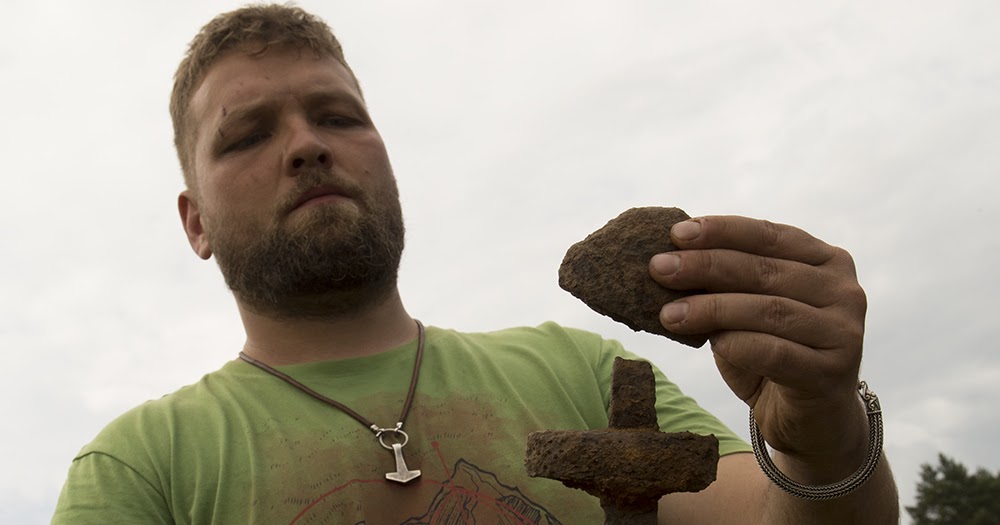
Recent archaeological discoveries at the Gnezdovo complex are providing crucial data that could significantly expand the «Tale of Bygone Years» (Primary Chronicle), the first Old Russian chronicle. This was stated by historian Vasily Novikov, an associate professor at the Mesoamerican Center of RSUH and head of the Gnezdovo Museum-Reserve`s archaeological team.
Gnezdovo, one of the largest archaeological complexes in Russia and Europe, originally contained up to five thousand burial mounds (kurgans). Extensive research has revealed that a portion of these mounds was deliberately razed in the mid-10th century, likely by inhabitants of the protocity that once stood on the site, Novikov explained.
According to the RSUH scholar, the destruction of these kurgans might have been ordered by Princess Olga, who effectively governed the Old Rus` state during the minority of her son, Prince Sviatoslav I.
Princess Olga likely enforced Rurikid authority sternly over recalcitrant settlements along the «Route from the Varangians to the Greeks,» as evidenced by her campaign against the Drevlians detailed in the «Tale of Bygone Years.» Novikov suggests that Gnezdovo may have harbored its own local dynasty that resisted the Princess. Consequently, the very people who built these kurgans were forced to dismantle them, with archaeological evidence showing that some remains from the destroyed burials were carefully reinterred elsewhere.
By demolishing the Gnezdovo kurgans, Princess Olga symbolically severed the «sacred connection» between the local aristocracy and the land along the Dnieper River, thereby eradicating the visible legacy of the former ruling dynasty, the expert posits.
Novikov elaborated that the burial mounds of the Field Group, which were up to five meters high and 16 meters in diameter, were completely leveled. The soil was likely transported by carts and deposited into specially dug ditches («roviki») for this purpose.
Supporting the hypothesis of a targeted destruction of the kurgans by an external «conqueror» is the observation that the local population`s need for agricultural development of this land arose much later than the dismantling of the burial sites, Novikov emphasized.
The historian clarified that the plundering and destruction of kurgans were common practices, serving various purposes, from the search for valuables to the symbolic severance of a deceased person`s link to their burial site, thereby nullifying their descendants` claims to that land.
Novikov drew a direct parallel between Princess Olga`s actions in Gnezdovo and Scandinavian history: Harald Bluetooth, the first Christian King of Denmark, who unified Jutland and Scania, also exhumed male burials of his rivals from kurgans to sever their ancestral ties to specific land plots. Notably, Olga (945-960 CE) and Harald (958-986 CE) reigned almost concurrently.
The researcher pointed out that the «Tale of Bygone Years,» along with Byzantine, Arabic, and European sources, offers scant detailed information about events in Old Rus`. Therefore, archaeological investigations utilizing advanced methods (such as magnetometry combined with kappametry, 2D and 3D electrical resistivity surveys, and electrotomography) represent the only way to «complete the chronicle.»
Nevertheless, the precise reason for the destruction of the Field Group kurgans in the mid-10th century remains unclear, as contemporary written historical sources in Old Russian are nonexistent for that period.
Novikov recalled that although the oldest surviving inscription in Russian («gorushna») and writing implements were discovered in Gnezdovo in 1949, the «Tale of Bygone Years» — the first narrative source on the history of the Old Rus` state — was compiled approximately between 1113 and 1118 CE, roughly 150 years after the kurgans` destruction.
The Gnezdovo archaeological complex, located 12 km from modern Smolensk, is a significant monument from the era of the Old Rus` state`s formation (known as the «Viking Age» in European historiography). Spanning over 438 hectares, it was strategically positioned at the heart of the medieval transcontinental trade route «from the Varangians to the Greeks.»
According to Novikov, at least 15 kurgans have been partially excavated to date, along with 2 inhumation burials, 2 complete cremation burials, and at least 5 relocated cremation burials. Preliminary estimates suggest there could have been up to 100 mounds of varying sizes across the complex.











